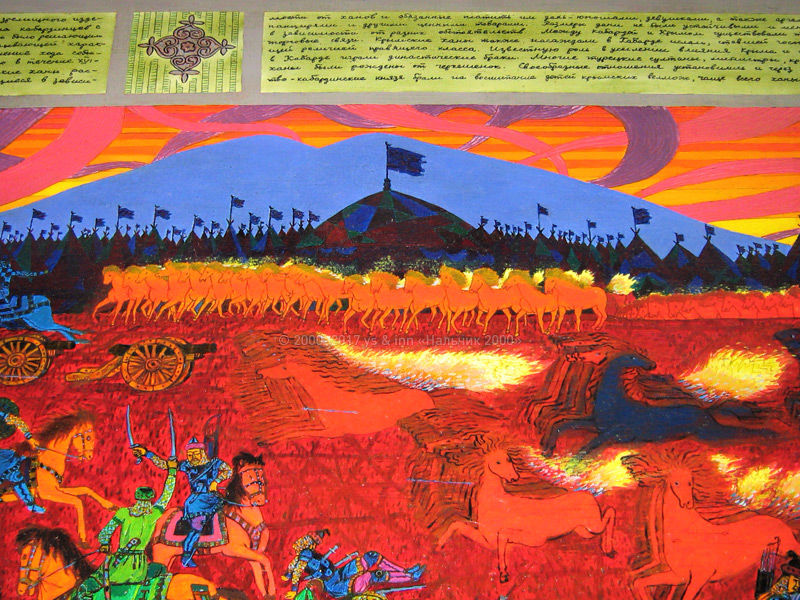Ethnic clashes, arrests in Kabardino-Balkaria. What’s happening and why?
The Kabardino-Balkar Republic in the North Caucasus has seen a spike in violence in the past few days.
Two ethnic groups, the Kabardians and Balkars, have come out violently against one another over the Battle of Kanjal which took place 310 years ago.
For the Kabardians, the date is of utmost importance, while the Balkars deny the fight ever even took place.
Here are the details:
In the beginning…
The events began on 18 September when residents of the village of Kendelen, ethnic Balkars, did not allow Kabardians to pass through: the latter were on a march in honour of the 310th anniversary of the Battle of Kanjal (more information on the battle below).
The march was headed for the Kanjal Mountain, where the battle took place. The only path to the march’s destination was through this Balkar village.
An enormous fight broke out, and special police units were called in.
The next day, there were clashes between civilians and the police force, with fights spilling over into the villages of Zayukovo and Baksan.
View this post on InstagramA post shared by Алания (Къарачай & Балкария) (@alan_nations) on
Continuation
The clashes continued on 20 and 21 September in the capital of Kabardino-Balkaria, Nalchik. The police used rubber batons and gas against civilians and shots were fired into the air.
In total, 40 people were detained and four injured, human rights advocate Valery Khatazhukov says.
Historical background: What is the Battle of Kanjal?

The Battle of Kanjal took place in 1708, when Kabarda was formally a subject of the Crimean Khanate.
The khans periodically attacked the region with the aim of collecting tribute and capturing prisoners. That year, however, Kabardian Prince Kurgoko Atazhukin decided to resist the Crimean khan, Devlet Giray.
Devlet Giray lost to the Kabardians and fled, abandoning his troops and convoys.
Various data sources suggest that the khan lost from five to 40,000 soldiers, while all the Ottoman janissaries involved in the battle were destroyed.
The Ottoman sultan, to whom the Crimean khan was but formally subjugated, deposed Devlet Giray from the throne and exiled him to the island of Rodos.
Why is the Battle of Kanjal relevant today?
For the majority of Kabardians, in addition to the Circassians and Adyghe, the Battle of Kanjal is a symbol of national heroism.
However, the Turkic-language speaking Balkars assert that there was no battle, that it was all thought up by the Kabardians that have their eyes on Balkar lands.
Many experts believe that the essence of the conflict really concerns land issues, and not whether or not the Battle of Kanjal took place.
On the Kabardian-Balkar land dispute
The conflict between Kabardians and Balkars arose around the anniversary of the Battle of Kanjal, however it has been caused by the unsolved problem of the status of mountainous pastures in the region, including Kanjal Mountain, say experts interviewed by the Caucasian Knot.
An even more serious clash took place between the two ethnic groups in September of 2008. The Kabardians held large celebrations on the 300th anniversary of the Battle of Kanjal and marched towards the mountain.
“What we’re talking about here is simply the interpretation of historical events by different sides. The main issue is not about associating one another with one of the sides of the battle, but the interpretation of the historical event in order to solve modern problems, mostly the issue of the status of mountainous lands and their use as pastures for livestock,” says Senior Researcher at the Institute of Geography of the Russian Academy of Science, Aleksey Gunya.
Reaction
The clashes in the villages and in Nalchik have given rise to equally heated discussions on social media networks. Here are some characteristic comments:
“Everyone must be asked! 1. Of the head of the republic, we should ask why he’s letting this happen, and right on the doorstep of the tourist season (the only business left in the republic, the vodka industry, is gone, this is all we have left)? 2. Of the head of the village of Kendelen, we should ask just what game he’s playing and why hasn’t he stepped down yet? 3. Of the head of Elbrus district, we should ask the same questions. 4. Of the republic’s clergy, we should ask why they’ve let this happen.”
Though many have come out in favour of one side or the other, the overwhelming trend on social media is a call for both sides to put an end to the confrontation.
On Instagram, the hashtag in Russian #вединственашасила (our strength is in unity) is being actively used.
Members of the Nalchik car club have decorated the hoods of their cars with the Adyghe, Balkar and Kabardian flags and called on all to “live in peace and harmony”.


















